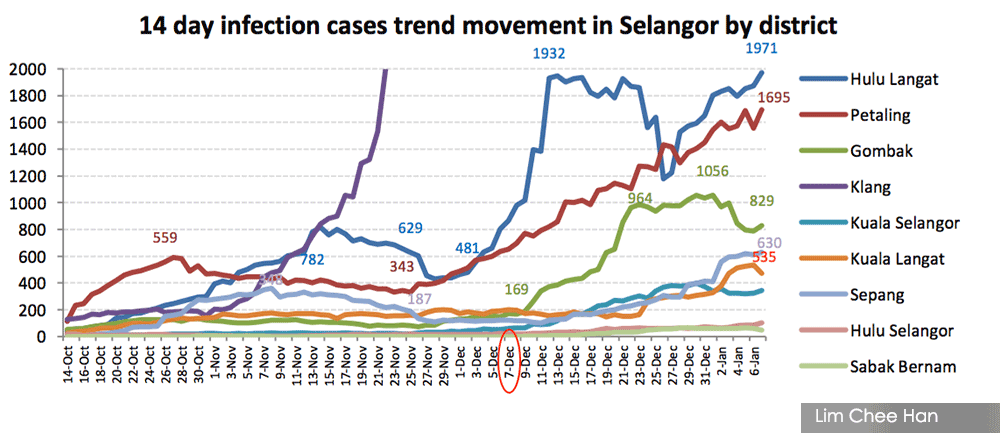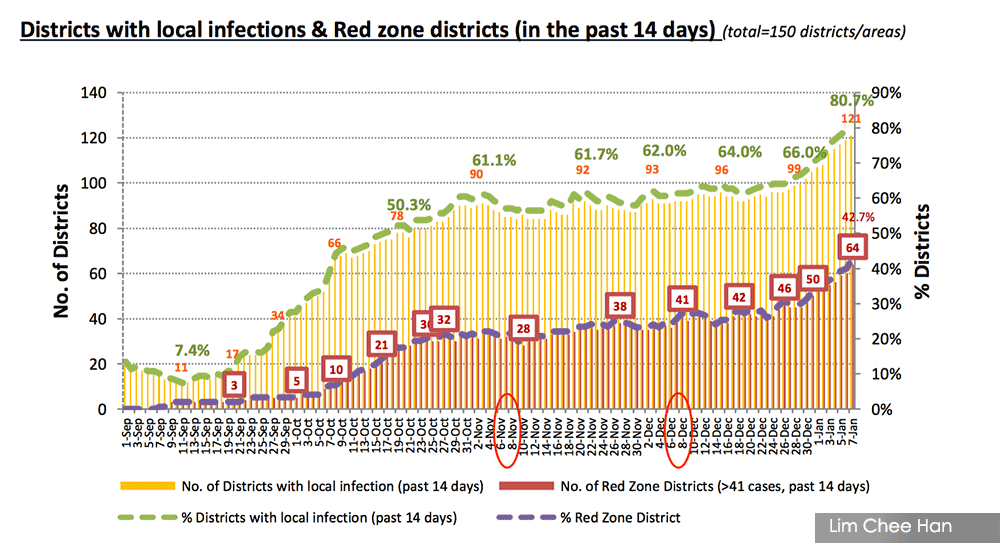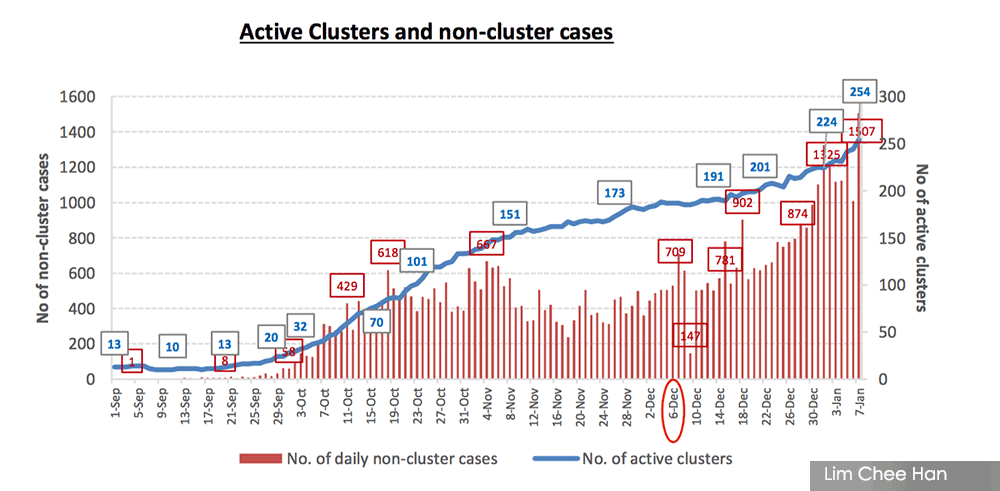Prime Minister Muhyiddin Yassin is scheduled to make an announcement today on new movement restriction rules to address the rising number of Covid-19 infections.
Daily new cases across the country are averaging 2,298 this month, up from an average of 12 in August when Malaysia succeeded in almost stemming local transmissions.
The third wave - which began in late September 2020 following the Sabah state election - has shown no sign of slowing down even with the imposition of the conditional movement control order (MCO).
As Sabah continues to record three-figures gains in new cases, the Klang Valley has overtaken it as the pandemic's new domestic epicentre.
So, how did we get here?
One academic analysed that cases began to rise in Selangor and subsequently spread across the nation after the government lifted the ban on interstate and interdistrict travel.
The ban was initially imposed in mid-October as part of the conditional MCO. It was lifted on Dec 7, 2020.
According to health economist Lim Chee Han's calculations, daily new infections were under control until the rules were relaxed.
This trend, Lim said, was most obvious in Selangor.

From Oct 14 (when the conditional MCO began) and Dec 7, most districts in the state showed relatively stable numbers for the total number of infections recorded in the preceding 14 days.
With the exception of Klang - which suffered a sharp infection spike due to the Teratai cluster - other districts began to see an uptick of cases after the first week of December.
This was especially so in Gombak, Sepang, Kuala Langat and Kuala Selangor.
Cases in Petaling and Hulu Langat, meanwhile, began to trend upwards in late November.
On Jan 6, 2021, all nine districts in Selangor saw markedly higher cases than a month before.
Malaysiakini previously reported that the number of new cases in Selangor detected from persons with symptoms like severe acute respiratory illness (Sari) and influenza-like illness (Ili) has also been steadily trending up since early December 2020.
The source of these infections at the time of confirmation is typically unknown.
This is while most Covid-19 cases are asymptomatic.
Don't repeat the mistake
As for cumulative infections nationwide, Lim noticed that cases had begun to dip following the conditional MCO's imposition.
This downtrend reversed after the first week of December.

"Active cases and local infection cases actually reduced by the beginning of December. This shows that the initial conditional MCO did work to contain and suppress the disease transmission.
"The premature lifting of cross-district and cross-state movement measures was probably the main factor for the surge of cases later on," he analysed.
Thus, the academic hoped that non-essential interstate and interdistrict travel would be disallowed when Muhyiddin announces stricter movement restrictions today.
"The government should learn from its past mistake of lifting movement restrictions in red zones too early back in December, resulting in the exposure of tourist places and rural folk to Covid-19 risks," Lim cautioned.
Health director-general Dr Noor Hisham Abdullah said last week that the conditional MCO had failed to bring down Covid-19 case numbers.
At least five new clusters have been sparked by interstate travel.
More widespread
Lim, a public health researcher with think tank Third World Network, also noted the recent jump in the number of districts that had locally transmitted infections.

Throughout November to early December 2020, about 62 percent of the 150 districts nationwide had seen local infections in the preceding 14 days. By Jan 7, 2021, this had risen to 80.7 percent (121 districts).
Lim analysed that lifting the ban on interstate and interdistrict travel was the "main contributing factor" for the spread of Covid-19.
"About 30 more districts have reported cases in the past 14 days as of Jan 7, compared to Dec 7," he noted.
The number of red zones has also risen, pointing to a worsening of the spread. Red zones are defined as districts that have recorded 41 or more cases in the past 14 days.
In early December, the number of such zones hovered around 40. As of Jan 7, 2021, there were 64 red zones nationwide.
Lim further calculated that many more Covid-19 cases were not classified as belonging to any Covid-19 cluster. This was while active clusters were on the rise.
This could mean they are unlinked or seemingly "random" cases, where its sources are unknown.
In early December, the number of daily non-cluster cases hovered around 700 infections. It had more than doubled by Jan 7 with 1,507 cases.
"This means that local transmission is more prevalent and the situation is less controlled," Lim said.

The worsening of the Covid-19 situation recently prompted Noor Hisham to signal the alarm that the healthcare system was at the "breaking point".
At the current trajectory, hospitals could run out of beds for coronavirus patients in several days.
As of Jan 10, Malaysia had 27,332 Covid-19 patients under treatment and just 28,674 total beds. This is while more than 2,000 daily new infections have been recorded in the past six consecutive days.
The Health Ministry has proposed that the government limits travel in targeted areas where infections are high.
It also wants to keep low-risk Covid-19 patients quarantined at home or in hotels in a bid to free up government quarantine centres. - Mkini





No comments:
Post a Comment
Note: Only a member of this blog may post a comment.